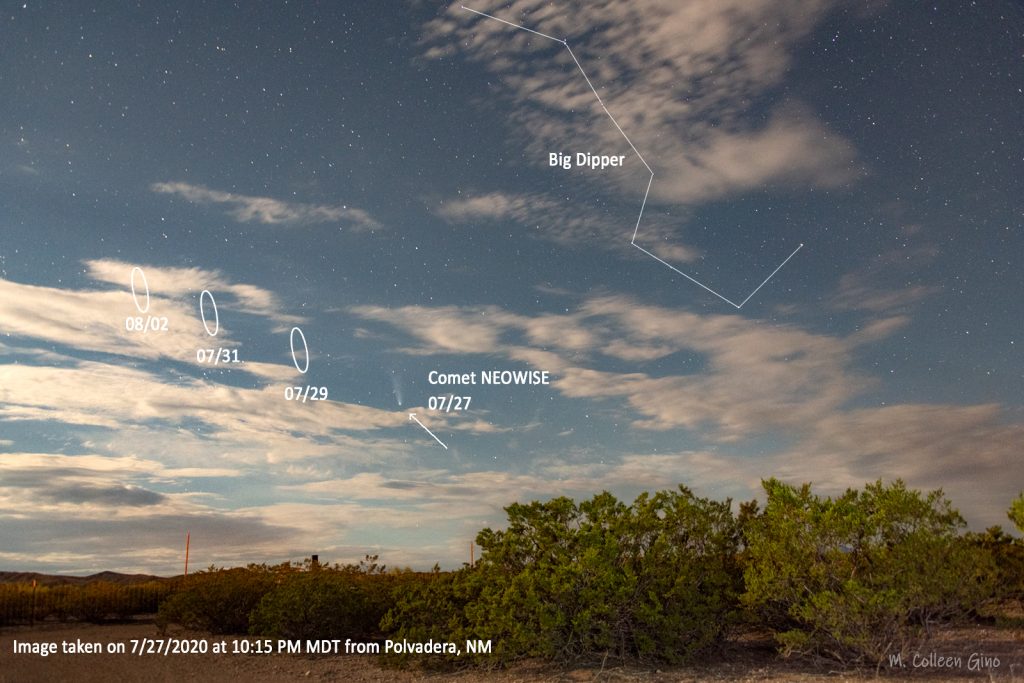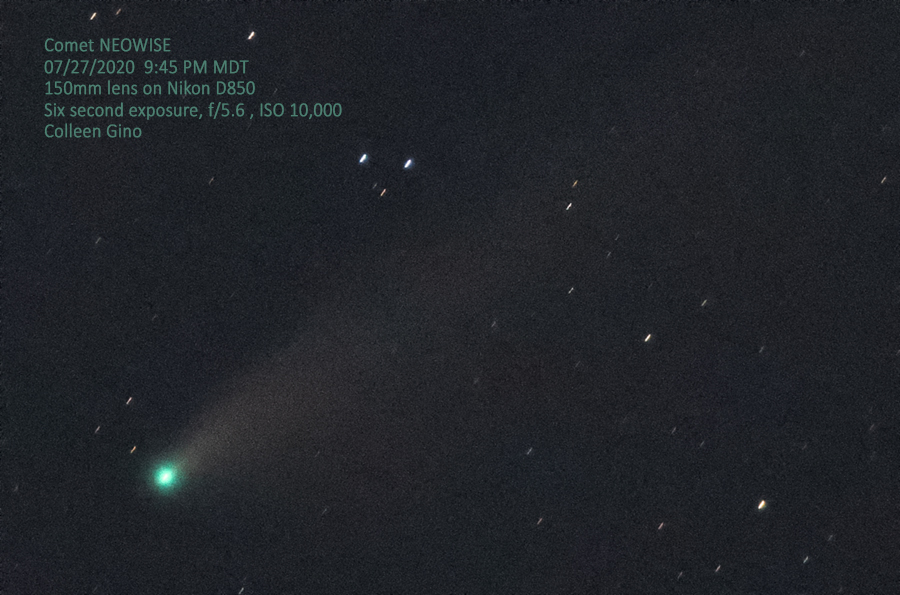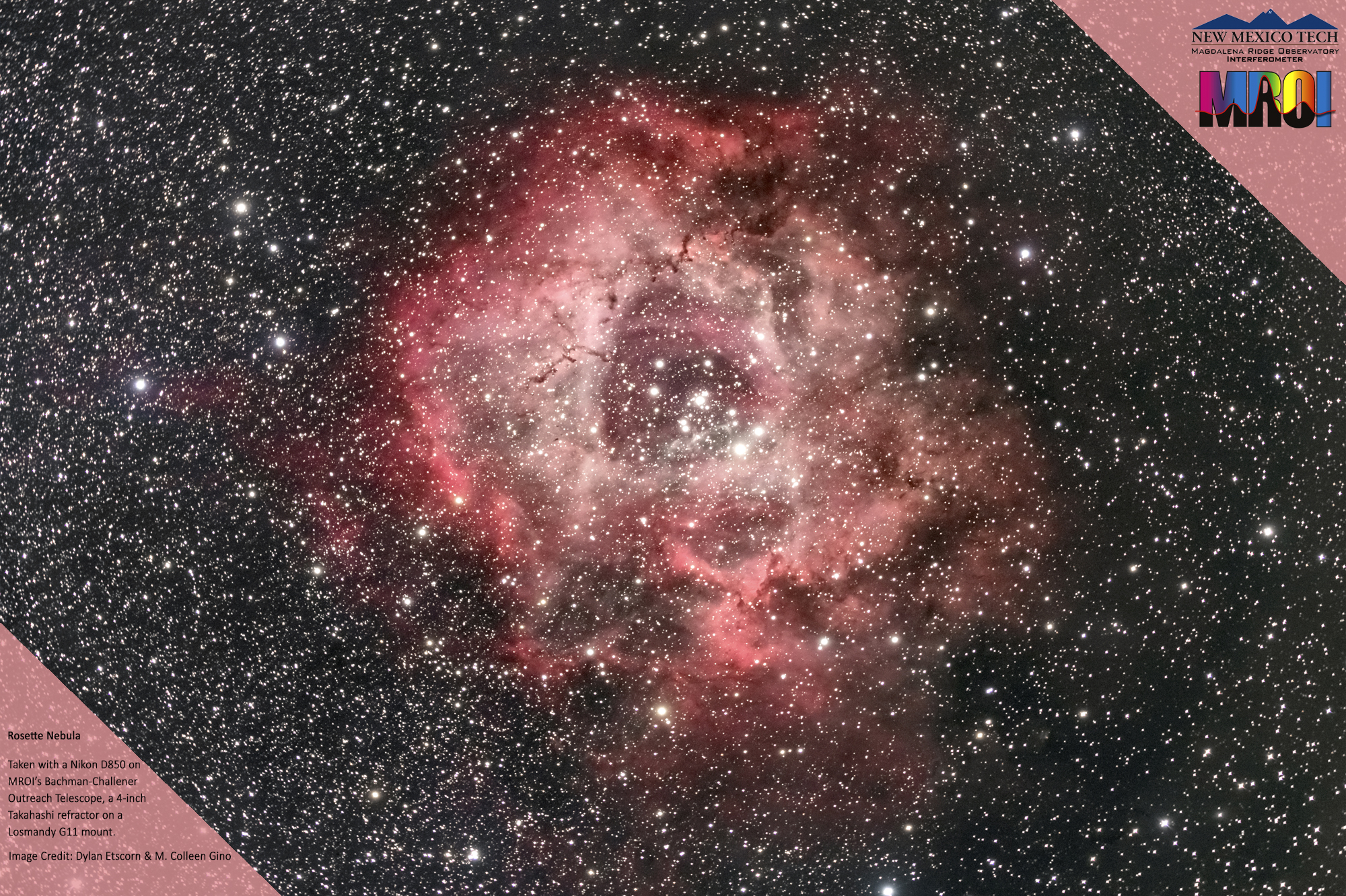I had intended to talk about Moon features today, but in light of our local weather forecast calling for clear skies, I’m going switch gears. For those of us in the Socorro, NM area it’s time to take advantage of a cloudless night and chase that comet! If we’re lucky, we might catch a meteor or two as well!
Comet NEOWISE is rapidly fading in brightness and will become more and more difficult to see as time passes. When I saw it this past Monday night, its glory had faded dramatically compared to my observation a week earlier, but it was still a beautiful sight to behold! The image below is from Monday night. It was a bit tricky to locate the comet even using long exposure photography; the spotty cloud cover didn’t help. It was not a naked-eye object, or maybe just barely using averted vision. I’ve marked the approximate location of Comet NEOWISE over the next several days. Keep in mind, however, that the Moon is getting brighter as it moves toward its full phase and the comet is getting dimmer, so you’ll likely need some kind of optical aid to see the comet.

On the up side of what looked different about the comet, its coma (the gas rich cloud around its nucleus) was clearly green, much more so than it did on the other times I observed it. This eerie green glow occurs when diatomic carbon in the coma is excited by UV light from the Sun, resulting in the emission of green light. The first image below is what I saw using just a 150mm lens on my camera. The second image is a telescopic view of Comet NEOWISE. While its tail isn’t very impressive any more, that green glow sure is!


Enough about comets, let’s talk about meteors. Did you know that according to the American Meteor Society there are 13 different meteor showers in progress this week? We’re not at the peak of any of them, but that doesn’t mean we won’t see an extra meteor or two in our observation session. You may have seen talk of the Delta Aquariids and Alpha Capricornids in the media lately. While neither of these showers have a high expected rate of meteors per hour (in the single digits), your chance of seeing a meteor is a little greater than usual. The image below taken last week shows two meteors piercing the Big Dipper as I was photographing Comet NEOWISE.

The biggie that we meteor watchers wait for every year is the Perseids; this major meteor shower runs from July 17 to September 1 this year. During its peak on the evening of August 12 to the early morning of August 13, we might see as many as 40 to 50 meteors per hour! We’ll definitely revisit the Perseids when we get closer to their peak.
I don’t know about ya’ll, but for me it’s time to brush off my binoculars, charge my camera battery, and prepare for what will hopefully be a night of mostly cloud-free observing!
M. Colleen Gino, MRO Assistant Director of Outreach and Communications
